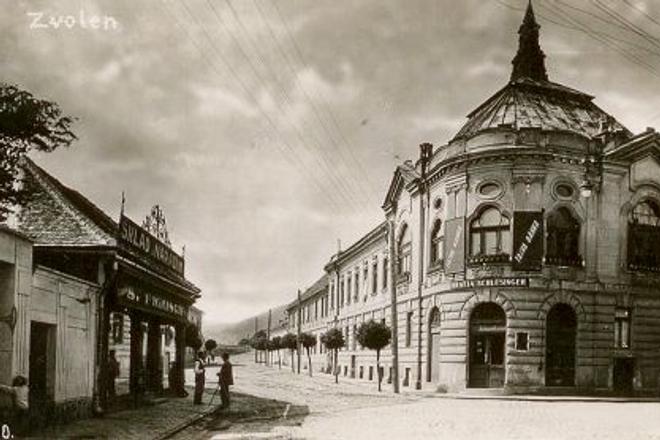THE ORNATE building seen in this 1926 postcard belonged to Tatra Banka, one of Slovakia’s most prominent banks. This specific branch was in the town of Zvolen, but at the time there were 46 other branches in Slovakia. This impressive number however did not reflect the skills of the bank’s management, or the solvency of the inhabitants – both of which were rather low.
Behind Tatra Banka’s extraordinary boom was the will of those in power and the specific conditions from which the still young republic of Czechs and Slovaks emerged. The bank had been operating on the territory during the monarchy, since 1896, when its name was Upper-Hungary Bank Tatra (Hornouhorská banka Tatra).
Imprudent financial activities before World War I nearly brought the bank to bankruptcy. Thus, the split of the Austro-Hungarian Monarchy and the establishment of Czechoslovakia were crucial for its continued existence. Economic and political pressure in the new state allowed for national banks to expand. Of course, this happened to the detriment of Hungarian and Austro-German capital.
It was therefore not surprising that the bank’s easy ride to success did not last long. With the financial crisis of the late 1920s, along with numerous managerial mistakes, the bank found itself back on the verge of bankruptcy.
As it would have looked embarrassing if the national bank suddenly ceased to exist, the government decided to rescue it and put it under the control of the Agrarian party. Tatra Banka saw another big boom in 1929, thanks in part to the state’s deposit of 60 million crowns. However, such support needed reciprocity. The Agrarian party, led by its chairman and country’s prime minister Milan Hodža, happily took up this pleasant duty, and the Agrarians - as well as Hodža personally - suddenly found themselves with a source for drawing political loans.
It seemed that the cycle of mutual help would work forever. It did not, however, as something more powerful than the state appeared in 1938, when the whole republic needed protection from Hitler. And when no help appeared, the country ceased to exist, as did the acquisitive political friendships of the first Czechoslovak Republic’s bankers.


